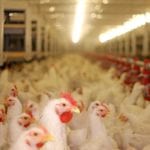
Tag Archives Conference Board of Canada
Editor’s Take: Canada’s farm labour gap needs holistic solution

Ag labour in the next 10 years
An upcoming survey aims to update agriculture’s labour needs for the next decade

Celebrating modern agriculture
The farm of today is nothing like the ‘good old days’ and thank goodness for that

Economist cites layoffs as fuel for economic slowdown
John Harper, senior economist with Western Diversification Canada, says there are a lot of job cuts coming to Manitoba

Conference board issues provincial food ‘report card’
Manitoba rates high on food safety but low on security and manufacturing growth
Editorial: A shaky foundation

Women lag in agriculture leadership roles
Of 65 national and provincial associations, only eight have a woman as their board chairperson or president

Agricultural labour shortage will worsen, new report says
Cash receipt losses to Canadian farmers from job vacancies pegged at $1.5 billion, or three per cent of the industry’s total value in sales and production

Buy out dairy quota with a retail price premium?
A former Liberal MP and a University of Calgary researcher are calling for an immediate phase-out of quotas

Health Canada continues to assess neonic herbicides
There is debate over how much damage would be incurred by corn and soybean producers if neonics are banned


